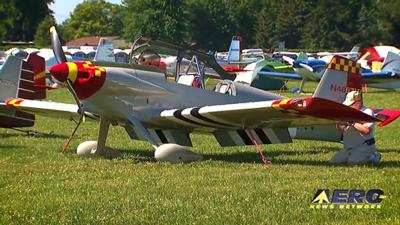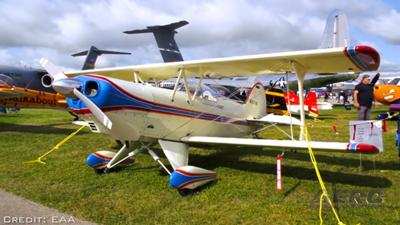Stats Are Below FAA's Not-To-Exceed Goal -- Continuing Decade-Long Improvement In Safety
There's good news for the sport aviation community. Things are safer out there than expected and seem to be trending that way for the future.

Safety totals for experimental amateur-built aircraft continued the decade-long improvement trend in 2020, as fatal accident totals finished below the Federal Aviation Administration not-to-exceed number for the 12 months ending September 30, 2020.
Over the 12-month period from October 1, 2019, through September 30, 2020, which mirrors that federal government fiscal year, total fatal accidents in experimental aircraft dropped more than 15 percent from the previous year, to 44 total fatal accidents including 32 in amateur-built aircraft - an 18 percent drop. The 44 fatal accidents were eight percent below the FAA's not-to-exceed number of 48 for Fiscal Year 2020.
"This is outstanding news as far as the continuing trend of lower accident totals in experimental category and amateur-built aircraft, especially as total flight hours increased over the past 12 months," said Sean Elliott, EAA's vice president of advocacy and safety. "The FAA continues to challenge our community by lowering the not-to-exceed number each year and we have met that challenge over the past decade, as we have seen fatal accident totals drop by nearly 40 percent for both experimental and amateur-built aircraft over the past decade."

As a comparison, experimental category fatal accidents totaled 73 for the yearlong period ending on September 30, 2011, with 51 of those in amateur-built aircraft. Along with the amateur-built subcategory, the FAA's experimental category includes other aircraft groups such as experimental/exhibition, experimental/light-sport aircraft, and research-and-development aircraft, among others.
The drop in experimental category accidents mirrors and, in some cases, exceeds the decline in overall general aviation fatal accidents over the past decade. Elliott noted that the overall fatal accident numbers for experimental category aircraft remain much lower than other recreational pursuits, such as boating and driving all-terrain vehicles.
EAA notes that it has worked closely with the FAA and NTSB on recommendations to reduce fatal accidents, including through participation in the FAA General Aviation Joint Steering Committee. Efforts have also included thousands of copies of the EAA Flight Test Manual now in the hands of amateur-built aircraft owners and the increasing use of an additional safety pilot during initial flight testing in amateur-built aircraft. Other safety initiatives ranging from regular safety webinars and the annual Founders Innovations Prize have also put the spotlight on safety for experimental category aircraft.
"While we are seeing already very small numbers, the continual emphasis on safety for all of us can never be overstated," Elliott said. "This is a trend that must continue as we pursue ever-higher levels of safety. We must focus on training, safety enhancements, and good pilot skills to complement the ever-improving technology in today's aircraft cockpits."



 Airborne-Flight Training 05.09.24: ERAU at AIAA, LIFT Diamond Buy, Epic A&P
Airborne-Flight Training 05.09.24: ERAU at AIAA, LIFT Diamond Buy, Epic A&P ANN's Daily Aero-Term (05.07.24): Hazardous Weather Information
ANN's Daily Aero-Term (05.07.24): Hazardous Weather Information Aero-News: Quote of the Day (05.07.24)
Aero-News: Quote of the Day (05.07.24) NTSB Final Report: Cessna 150
NTSB Final Report: Cessna 150 Aero-News: Quote of the Day (05.08.24)
Aero-News: Quote of the Day (05.08.24)







